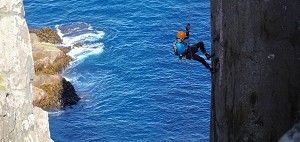
There is so much climbing and adventure to be had on Tasmania that writing a destination article to the island is an impossible task. It would be akin to summarising England, Wales, or Scotland in a single article. Still, it's March (or at least it was when I wrote this), raining outside, and I've got little else to do, so here's an attempt to offer a snapshot of what's on offer.

Tasmania is remarkably British in many ways: many of its crags being of a modest size, they're relatively close together (you never drive more than 4hrs to get somewhere), there's a blend of sea cliff + mountain crags, a variety of rock types, and a mixture of trad and sport. However, there is a very distinct line where the comparison stops and that is where the Tasmania climbing experience becomes so memorable. Maybe it's the absence of so many people, the remote nature of some of the areas, the endless gum trees, or the wallabies, pademelons, and other magical creatures that adorn the landscape. In the words of one Hobart local "You'll climb half the number of routes you would elsewhere, but you'll remember every single one of them". This is a sentiment I felt resonate throughout my time out there. You've got to put the effort in to getting the routes done, but if you do - you won't forget it.
What I'll start with is a summary of the island itself, with specific reference to weather, wildlife, and where to go, then move on to a brief overview of some of the key areas.
Weather
Going back onto the parallels with the UK, Tasmania will provide an all too familiar climate for the British climber - anything can happen. Tasmania is not a place you can go with a fixed plan, it's a place where you go with plenty of options, then plan day by day according to the weather. The island has a great many weather systems and micro-climates that are worth being aware of. For starters, the west side of the island gets over five times the rainfall of the east. The mountains, whilst not being of an extreme altitude (1,400m), are high enough that it can snow on them in the middle of summer. To put it in simple terms, you'll make similar decisions to the ones you'd have to make on a trip to North Wales: if there's high pressure, it's nice and hot, and if the sun is shining then get yourself up to Cloggy, but if it's cloudy up in the mountains and clear on the coast get yourself to Gogarth. In the case of Tasmania your coastal options would be the Freycinet or Tasman Peninsula, in the case of Cloggy your options would be Ben Lomond or the Organ Pipes.
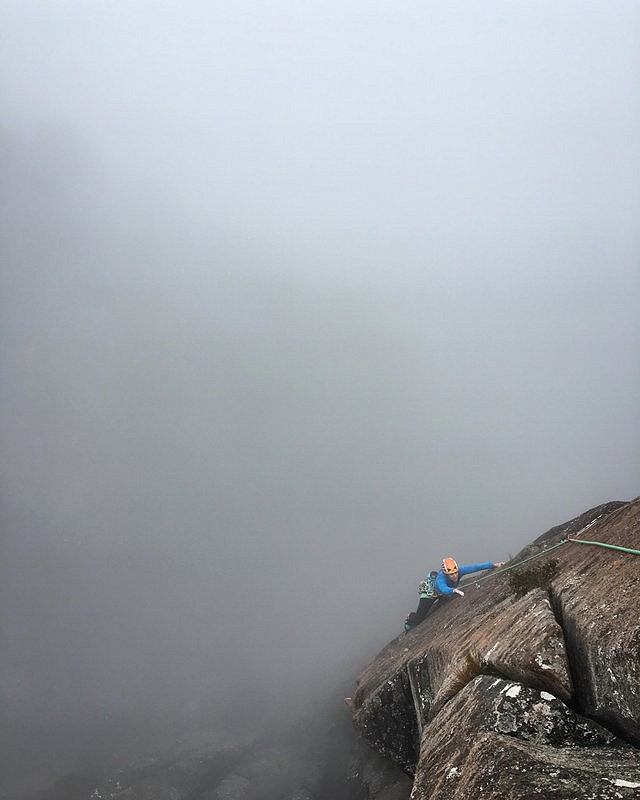
The UV in Tasmania is exceptionally high, shockingly so in fact. We started the trip using SPF 30 sunscreen but soon upgraded to SPF 50 as the former wasn't providing us with anywhere near enough protection. Obvious though it might sound, a hat is a pretty essential bit of kit and climbing in a long sleeve shirt + collar isn't a bad option either. If the above warning wasn't clear enough, or you fluffed it and are presently sat sunburned in a cafe somewhere in Tasmania, then buy yourself some Aloe Vera cream - it'll help ease the pain.
All that said, temperature-wise Tasmania - assuming you're there at the right time of year - is pretty much perfect as it infrequently gets too hot, maxing out at around 25 degrees (you'll meet lots of people visiting from the mainland as a result, they're after the cool weather whilst you're there for the warm weather). Locals recommended the Willy Weather and bom.gov.uk forecasts as being the most accurate, not simply for the rainfall, but for the swell on coastal regions - too much and the waves will be over the top of the crags!
Wildlife
Tasmania's wildlife is out of this world. If you have even the faintest interest in animal life I would highly recommend downloading the Tasmania Wildlife App. There are a few available, many of which are free, but the best is the Field Guide to Tasmanian Fauna by the Tasmanian Museum and Art Gallery - click here to download it on the Apple App Store or here for GooglePlay. If you're after more there's a selection from Tasmania Parks & Wildlife here.
There are a great many animals that you're likely to see simply through visiting the areas listed below, but there are some that require a bit of effort. As a short-list of what you're likely to see, I'd say it would be impossible to leave Tasmania without seeing wallabies, pademelons, and kookaburras, but there are a few things that may require a bit more effort, or just a bit of good timing, these include little penguins, whales, wombats, platypus and of course the Tasmanian devil itself.
If you're up for seeing the little penguins then you'll need to head out at either dawn or dusk. They appear at a variety of places around the island, but Bicheno is a good option. There's a good pizza shop and free wifi in the town centre too. Whilst a guided tour is available, you can head onto the Gulch on your own, do a bit of bouldering in the evening sun, then sit it out until they arrive from their day out at sea.
In terms of poisonous stuff, there are three snakes that inhabit the island - all of which are poisonous. As such, if you see a snake don't try to touch it, lick it, kick it, or tread on it! In all likelihood the only time you'll see a snake is when it's slithering away from you, but on warm days they can be prone to being lazy, lying around for longer than they might normally. If you do get bitten, stay where you are and send your climbing partner to get help. There is anti-venom for all three (irrespective of which snake you get bitten by, as they all have the same venom) and if you stay calm and don't move you'll be fine. If you're up for reducing the chances of this, stomp around so that you send more vibrations through the ground, or wear trousers - each of the three snakes only have short teeth and if there's material it's likely that most of the venom will end up on that as opposed to your body.
Penguins at Bicheno / Wombats on Maria Island / Platypus - somewhere / Whales - again, somewhere
Australian Grading System
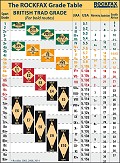
Guidebooks
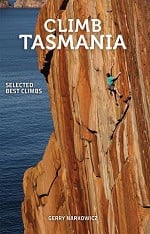
In addition to this, Tasmania is blessed with a free/downloadable app - thesarvo - which basically contains all the information that Climb Tasmania has and more. It is an excellent resource; however, I found myself reaching for the guide 9 times out of 10 because a) I like reading guidebooks b) because I find guides easier to use than apps, and c) phone battery was/is a precious thing. Either way, it's good to have both and cross reference - particularly where the starring was concerned.
Freycinet Peninsula
Protection: A bit of everything - trad, sport, and mixed (i.e. trad gear with the occasional bolt)
Climbing Style: Varies from location to location, with everything from cracks (White Water Wall) to slabs (The Hazards + Mount Amos)
Grade Range: 9 - 32 (VDiff to 8b+)
Best For: Sunshine, beaches, lighthearted climbing, relaxation, wildlife
The Freycinet Peninsula is located on Tasmania's sunny east coast, and is arguably the most reliable venue in terms of weather and conditions. As a result of the climate, plus the endless beaches, it has something of a holiday feel about it, with more tourists, coffee shops, and ice creams than all the other areas put together. In a weird sort of way, it's like an upside down version of Cornish Granite: similar rock type, only a slightly different colouring in the rock (pale as opposed to golden) and lichen (orange as opposed to yellow). Consequently, there's a kind of familiar feel to the place, which is both warm and welcoming. Approaches are, by and large, quite short too: between 1 minute and 2hrs.
In terms of where to stay, there are two main camping areas - the White Water Wall and the Friendly Beaches. The White Water Wall area is without doubt the most convenient when it comes to close proximity to the climbing, because it's basically a campground on top of the crag. It is also remarkably quiet for such a stunning spot, something that is partly attributed to a) the fact you'll need a high clearance vehicle or 4x4 to get there and b) there are a lot of mosquitos (remember to bring repellent)! As such, the Friendly Beaches are a fantastic alternative for those that don't want to get bitten and don't mind doing a bit of extra driving. In fact, for most of the other areas in/around the Freycinet it is probably quicker and more practical to stay here, as you don't have to negotiate a rough 4x4 track every time you wish to get in/out of the campground. Whichever campsite you choose, both have composting toilets, stunning views, and tame and wonderful wildlife - expect the wallabies and pademelons to be coming up to you in the evenings to see what you're up to!

The Freycinet crags have something for everyone, with the mid-grade paradise in/around the White Water Walls, the bolted test pieces of the Star Factory, the granite slabs of the Hazards, and the strangely alluring sea level traverse that takes 10hrs.
Recommended Routes
White Water Wall Area: Apline (12) 12,Harlequin (18) 18, Alchemy (21)21, No More Mr Nice Guy (19)19
Star Factory: Antimatter (23) 23, Power to the Perculator
The Hazards: Stud City
Mount Amos: Incipience (22), American Beauty
Wineglass Bay to Sleepy Bay: The Sea Level Traverse (16)
Rest Days
Rest days on the Freycinet are something to look forward to, with some of the finest beaches around. If you have a snorkel + mask then get yourself to either Sleepy or Honeymoon Bay, as the crystal clear water is perfect for diving and there are a lot of fish. If you're good at holding your breath there are also abalone to be found. There is also a terrific 5hr bush walk to the immaculate Wineglass Bay. On your way up you're likely to be surrounded by tourists, but get yourself down to the beach itself and there'll be a fraction that made it that far - head over to Hazards beach afterwards and you'll be on your own! In addition to this, Coles Bay is home to the finest coffee shop in the area (Tombolo), plus a small but well stocked shop, a pub with wifi (and beer obviously...), plus a water tap if you need to fill up your bottles (located in the park just off Harold Street). The latter is quite important as there's no drinking water available once you're in the park.
Tasman Peninsula
Protection: A bit of everything - trad, sport, and mixed (i.e. trad gear with the occasional bolt)
Climbing Style: Varies from route to route, but everything from crimps and aretes, jugs to slopers
Grade Range: 16 - 29
Best For: Wild days out, rugged coast lines, penal colonies, saunas
Being a peninsula is all that the Tasman Peninsula has in common with the Freycinet, because the feel of the two places couldn't be any more different if it tried. Where the Freycinet feels lighthearted and sunny, the Tasman Peninsula tends to have that extra degree of commitment required to complete the routes, plus there always seems to be a high wind blowing. As a result of these harsh elemental forces it is home to some of the most memorable routes on the island, with the Totem Pole and Pole Dancer at Cape Raoul being two good examples. Outrageous features in extreme environments. The chances are that these are the routes you came to Tasmania to do and one thing is for sure: they won't disappoint.
The Tasman Peninsula is located around 1hr 40mins away from Hobart, as such it is possible to do day trips or to stay at one of the area's campsites. One of the more popular free campsites is the one located at Fortescue Bay, but it does have something of a reputation for being full of boguns (Aussie slang for rednecks) - and as such can be very loud and very full. A much more pleasant option is to stay at the tranquil spot just beside the parking for Cape Raoul, which costs $5 per night, has the most pleasant composting toilet I've ever used, one of the nicest campsite owners I've ever met, and last and certainly not least - a sauna. For an additional $5 the owner of the campsite will leave you out some wood for the fire, something that at the end of a wild day's climbing will soothe your sore muscles like nothing else.
Whilst I've already mentioned the Totem Pole and Pole Dancer, it would be good to say a little more about each, plus draw attention to a few other areas throughout the Peninsula. The Totem Pole itself lives up to all expectations, with climbing to match the quality of the feature. Pole Dancer too is not just memorable because of the climbing, but the mission to get all the way out to the end of the columnar ridge - it's a big day out! If you're not up to the Totem Pole then check out The Candlestick - what it lacks in hard climbing it makes up for in a swim. Next up you've got Mount Brown, which offers bolted multi-pitch sea cliffs up to 10 pitches long - never has 'sport' climbing been so adventurous! Finally, if you're looking for something a little more relaxed there's more conventional sport climbing to be had at the appropriately named Paradiso.
Recommended Routes
Totem Pole: Deep Play (24) 24,The Free Route (25)25
The Candlestick: The Candlestick Direct 16
Mount Brown: Talk is Cheap (24)24
Cape Raoul: Pole Dancer (22) 22, Axed Master Pole Disaster (Link Up) (21) 21, Certified Wise (23) Moai: Sacred Site (18) 18, Burning Spear (22) 22
Paradiso: Offender of the Faith (24) 24, Retrograde Amnesia (25) 25, Sultan of Sweat (25) 25
Rest Days
The Tasman Peninsula's main attraction is the former penal colony located at Port Arthur. Back in the days when Tasmania was known as Van Diemans Land this was probably the last place you wanted to be, but it acts as an eye opening experience of what convict life was like. The settlement and grounds are also extremely well kept and there is also a nice cafe with free wifi (entry = $38).
If you're feeling rich, or are really keen on wildlife, then I would also recommend checking out the Tasman Island Boat Tours. Whilst not the cheapest, it does make for an incredible day out and you'll get to see some incredible rock architecture, wildlife (Albatross, Sea Eagles, Whales, and Dolphins are all on the cards here), and - with the right sea conditions- you'll get to go right up to the Totem Pole too.
There are also a number of interesting geological features, such as the Tessellated Pavement and 'Remarkable Cave' that make for nice short walks whilst you're in the area.
Ben Lomond
Protection: Trad, lots of cams - 3 sets recommended (more if you have them!)
Climbing Style: Crack climbing, with very few face holds
Grade Range: 17 - 28 (HVS - 8a)
Best For: Unrelenting jamming test pieces, pain, suffering, hardship, and those short of finger strength
Ben Lomond's spectacular columnar formations offer undeniably alluring lines for the rock climber to follow. Soaring crack lines are the flavour of the day here, and they're impressively pure for the most part too, with very few face holds to escape onto. As such, be warned: if crimping is your thing, you're going to be in for a hard time. If, however, jamming is your thing, you're in for a real treat.

Now it's worth mentioning that the plateau of Ben Lomond actually covers a huge area and there are a number of different crags areas within it. The one I've focused on here is the most popular, Frews Flutes, as it faces north so receives plenty of sun - plus the routes are incredible. Other areas such as Stacks Bluff (located further to the south) I will leave for you to explore; whilst it is equal in quality, it is a lot colder due to its shady aspect - thus a little more challenging to get in condition. It is also a 3hr drive to get between the two areas, so it'd be like deciding to drive from North Wales to the Peak District. In fact, being that Ben Lomond is a bit of a drive from anywhere it's worth stocking up on food, firewood (if you're into that sort of thing), and ice (if you like things to remain cold) before you go, as there won't be anywhere to buy it once you're up there.
When climbing at Frews Flutes you are blessed with not only a large camping area (which is free of charge when you buy a Parks Pass), but also a self-built climbers hut - either option being appealing. The former has a flushing toilet (the height of luxury), fire pits, and drinking water, plus the added benefit of being relatively mosquito free.
Whilst some may consider it cheating, the use of crack gloves is pretty much standard in Tasmania, so if you're feeling high and mighty make yourself a tape glove, if not get involved - they're great! If you don't take heed: the jamming is way more sustained than anything we've got here in the UK and by eschewing the glove you'll probably end up limiting the number of routes you can do. As such, consider purchasing a pair before you head out...
Recommended Routes:
Barbe Di Vendetta (18), 17
Rajah (18), 18
Ramadan (19), 19
Dangerman (21), 21
Defender of the Faith (22), 22
Rest Days
Due to the remote nature of Ben Lomond it's unlikely you'll be driving anywhere on your rest days, simply because a) it's a long way and b) the chances are that those cracks will have taken their toll and you'll actually be up for a genuine day of rest!! If you're in an exploratory mood it would be worth driving on up to the summit, which is an impressive upland plateau with plenty of lots of day walk potential.
Organ Pipes
Protection: Trad & Sport
Climbing Style: Cracks, Faces, and Aretes
Grade Range: 13 - 30
Best For: Soaring aretes, intricate and edgy face climbs,
Located just above Hobart, you could almost be lured into thinking that Mount Wellington (aka. the Organ Pipes) was convenience cragging - quick access, good rock, a nice mix of grades, plus a blend of trad and sport available - there's something for everyone. There is, of course a 'but', and this surrounds the fact that the Organ Pipes aren't just above Hobart - they're 1000m above Hobart! As such, it's pretty much standard for 'the Mountain' to be 10 degrees colder than down at sea level. Not only that, but on our first day in Tasmania it actually snowed up there! With that in mind, the Organ Pipes aren't quite the picture of perfection when it comes to quick access and convenience cragging, but what they do offer is a blend of things unlike anything we've got here in the UK.

Recommended Routes:
Fiddlesticks (14) 14
Sky Rocket (20)21
Left Out (21) 21
In Flagrante Delicto (24) 24
After Midnight (24) 24
Rest Days
A curveball option for the cultured climber would be to visit the highly acclaimed Mona - Museum of Old and New, which was privately set up by David Walsh - a colourful character who privately funded the enterprise through money he had made on gambling. There is a lot going on within the gallery, so much in fact that it would be difficult to cover it all within a single day, but it is definitely a wide-ranging art based experience (coming from someone with little or no actual experience in art).
The Salamanca Market on Hobart's waterfront is one of the area's prime tourist attractions, with plenty of locally grown produce and other offerings available. For more liquid produce the Cascade Brewery is well worth a 'rest day' investigating, although don't expect to cruise those routes up at the Pipes the following day...
Finally, for those that have an interest in animals the Bonorong Wildlife Sanctuary provides a good chance to see some of the island's unique marsupial life close-up, something that is actually quite difficult owing to the reclusive nature of much of it - plus the fact many are nocturnal! If this wasn't enough, you get to FEED KANGAROOS BY HAND!!!
Other Places
Bare Rock
Alongside The Star Factory, Bare Rock could be considered Tasmania's premier sport climbing destination. The Boneyard face is a must for anyone operating in/around the 7a+/25 region and above, although it is worth mentioning that due to its northerly/low-lying aspect is very warm (i.e. too warm) on sunny days - as such it's a good winter venue.
Cataract Gorge
Located within Tasmania's 'second city' Launceston, Cataract Gorge offers convenience cragging in a nice, light-hearted spot. The routes are all of a shorter stature, as is the approach, and it's a good place to escape to for a quick route or two when the weather is bad elsewhere. There are also plenty of other activities available, such as swimming in the river below, or jumping off the rocks into it if you're feeling a little less energetic.
Frenchman's Cap, Mount Geryon, Federation Peak, the Tyndalls, and Cradle Mountain
At 1,443m, and with a 1 1/2 day approach, Frenchman's Cap is both higher and more remote than anything the UK has to offer. It also gets all the bad weather going and renowned for its wild exposure and loose rock - so why include it here? Firstly, because it represents the epitome of the wilderness adventures that Tasmania has on offer; secondly, because it points the way to all of the other high mountain options out there - the traverse of Mount Geryon, an ascent of Federation Peak, conglomerate madness in the Tyndalls, or a day-hike of the iconic Cradle Mountain.
The West Coast
If you hit Tasmania's wild west in the right condition (i.e. when it's not raining...) it is a truly remarkable place, where the ferocity of the elements are very apparent. There are very few towns/villages on the west too, with most having a history of mining - the result is an odd blend of a beautiful area that has been ripped apart for its minerals, much like looking across to the slate quarries when you're standing in Llanberis. However, when you get to the coast there are some lovely granite outcrops at Trial Harbour & The Velvet Underground, but the best and most scenic of all is without doubt The Conical Rocks, which require a day or two as you need either a 4x4 or a boat ride to access them.
Logistics
When to Go
Although you can climb in Tasmania year-round, your best option to get the most of the above in good condition would be to go between December and April - that way you'll have the largest number of crags available. November can be quite wet and April is perfect for the Boneyard, Star Factory and other north facing crags.
How to Get There
The first step of getting to Tasmania is to get yourself on a long haul flight from wherever you are to either Sydney or Melbourne, watching as many Lethal Weapon, Die Hard, or associated movies to pass the inevitably long flight time it takes to fly across the world.
Whilst there is a ferry from Melbourne, if you're coming from the UK it is more than likely that you'll be flying. Internal flights are operated by Jetstar and Virgin.
It's more than likely you'll get 30kg with your long haul flight, but remember to check you get the same allowance within the final leg too - it's not always the case.
Accommodation Advertise here
No Premier Listings found in this area
Food and Supplies
Climbing equipment in Australia is much more expensive than back in the UK, as such it is wise to bring everything - plus maybe a few spares. That said, accidents do happen and if you're in need of kit then there are a few shops in Hobart (Mountain Designs, Mountain Creek + a second hand outdoor shop) and Launceston.
Outdoor Shops Advertise here
No Premier Listings found in this area
Instructor/Guides Advertise here
No Premier Listings found in this area
- DESTINATION GUIDE: The Finest E3s in Pembroke 18 Aug
- PHOTOGRAPHY: UKC Photography Awards - 2024 Category Finalists 18 Aug
- DESTINATION GUIDE: The Finest E2s in Pembroke 13 Aug
- DESTINATION GUIDE: The Finest E1s in Pembroke 4 Aug
- REVIEW: Edelrid Ohmega - An Absolute Game Changer 25 Jul
- REVIEW: Boreal Mutant 3.0 22 Jul
- REVIEW: Unparallel Float - support with sensitivity 27 Jun
- REVIEW: Jetboil Genesis Stove System - The Ultimate Two Ring Burner? 3 Jun
- INTERVIEW: Esther Foster and Callum Coldwell Storry on the Langdale Extreme Rock Challenge 27 May
- REVIEW: Patagonia Nano Air Ultralight - Men's and Women's 23 May

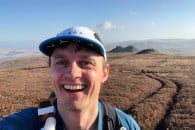





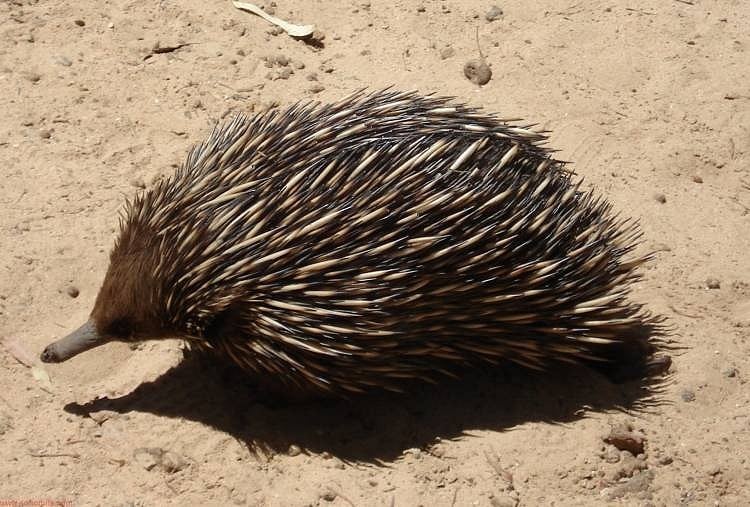



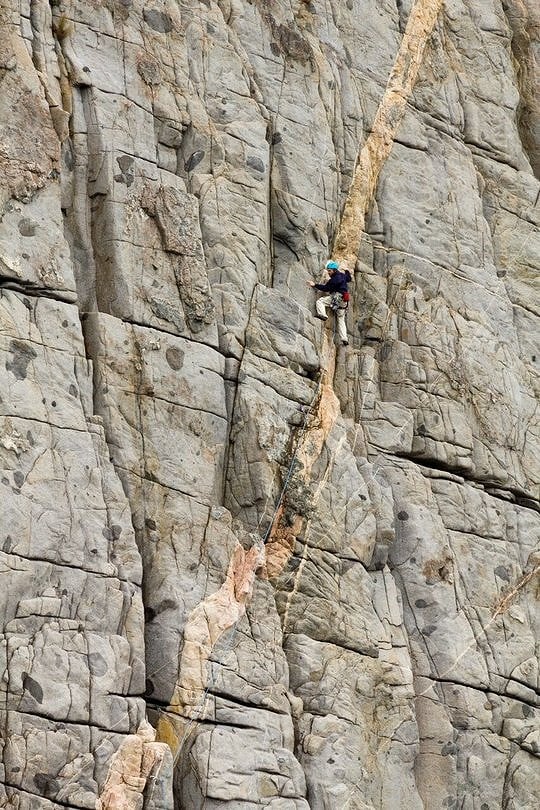

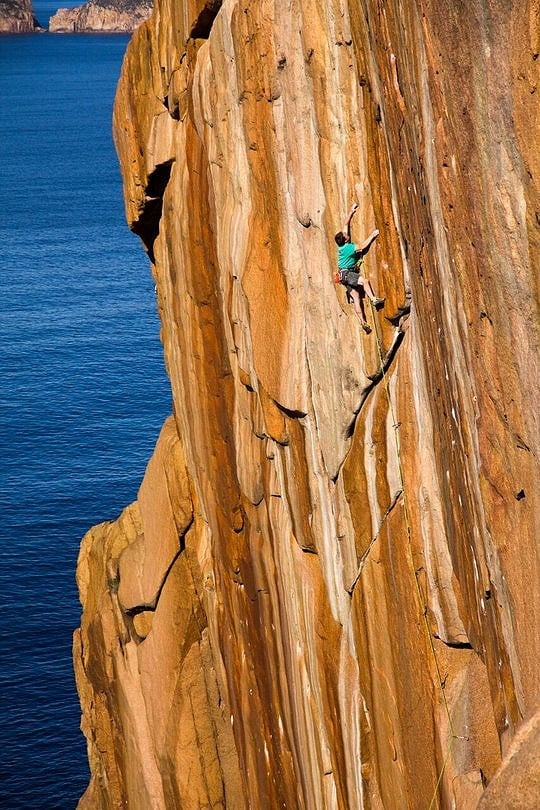



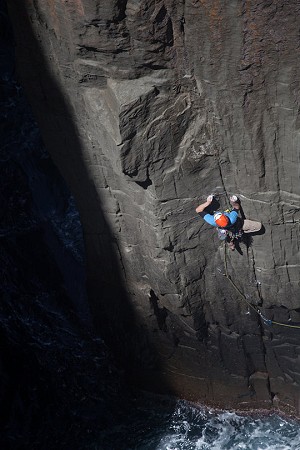
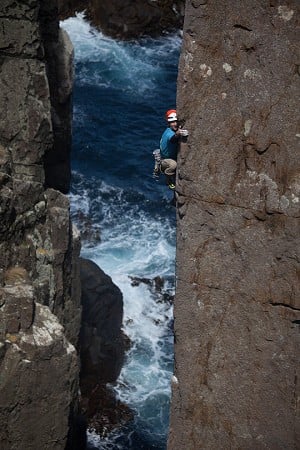
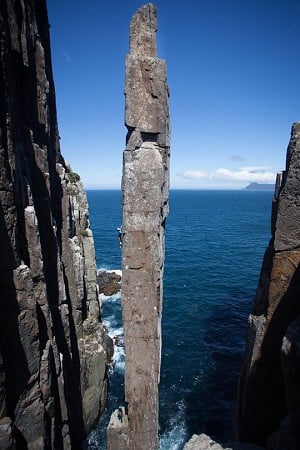
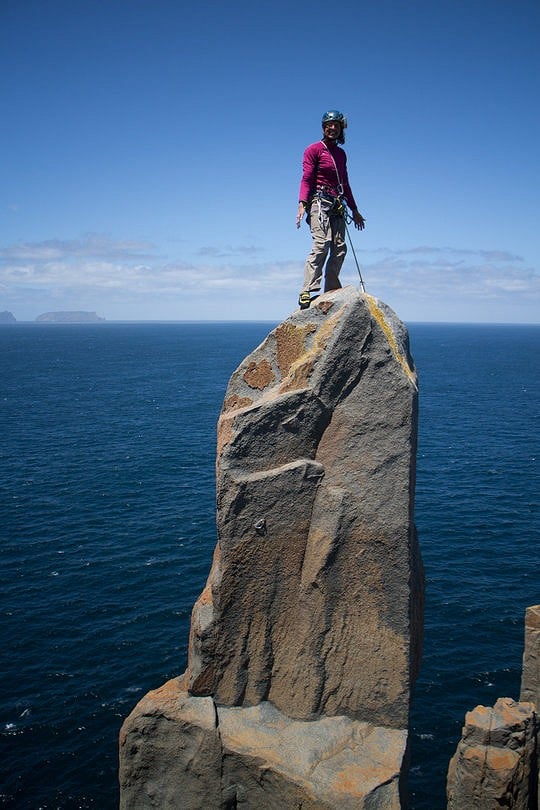
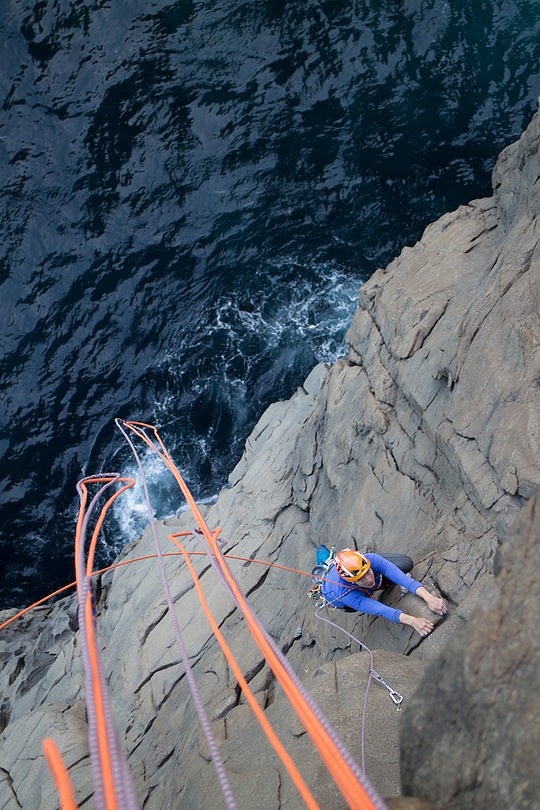
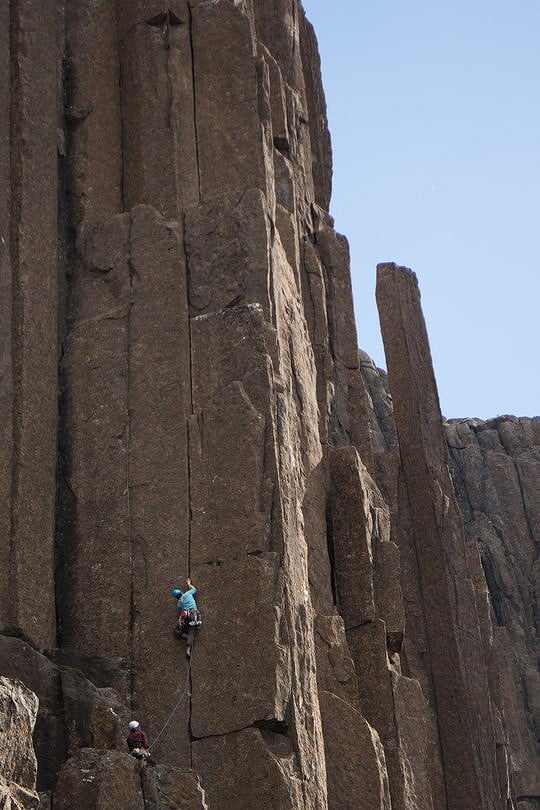
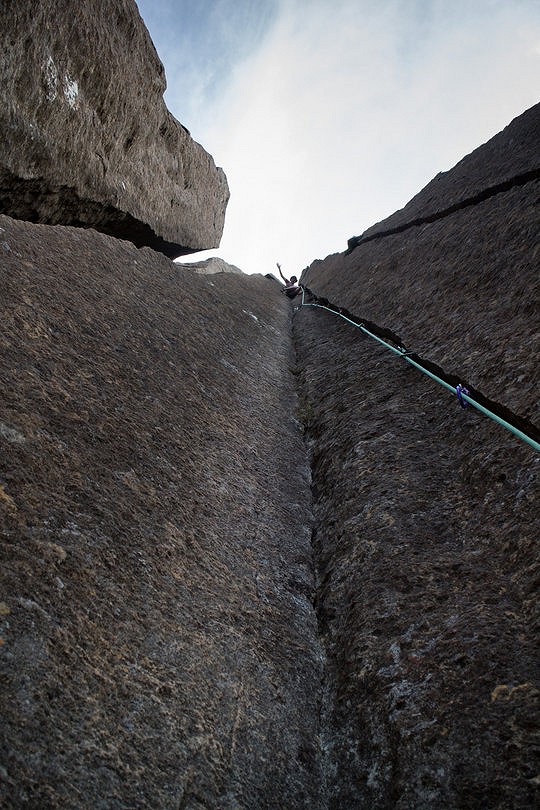
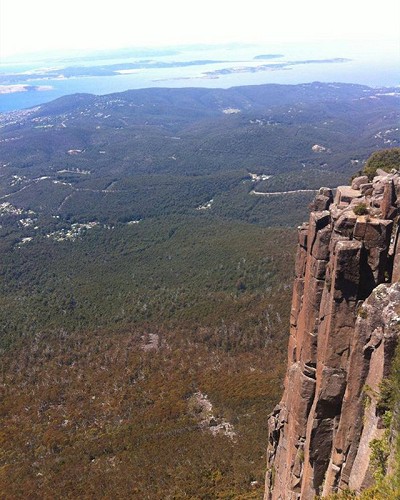


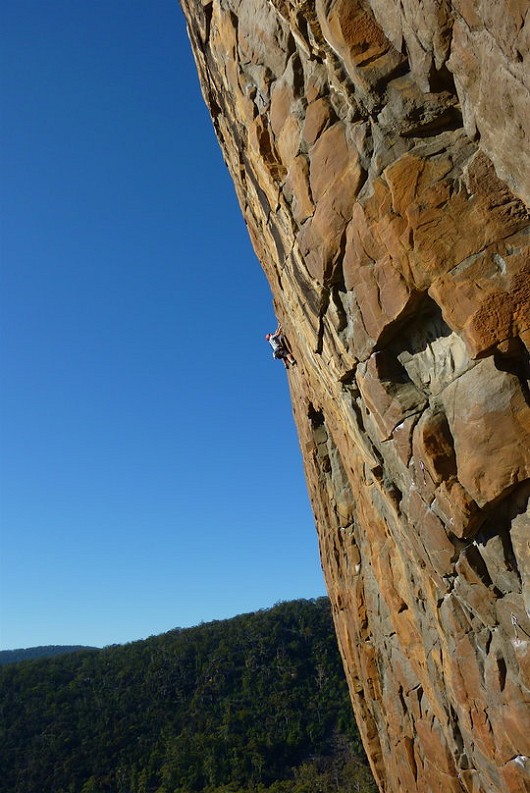
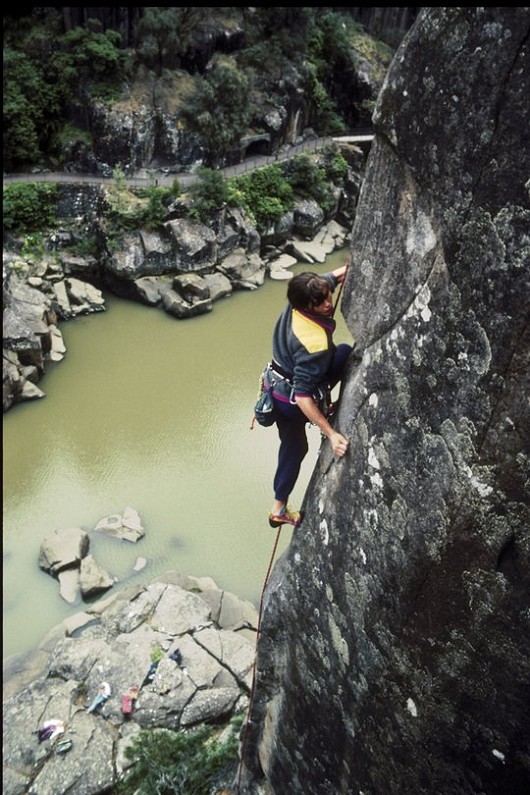
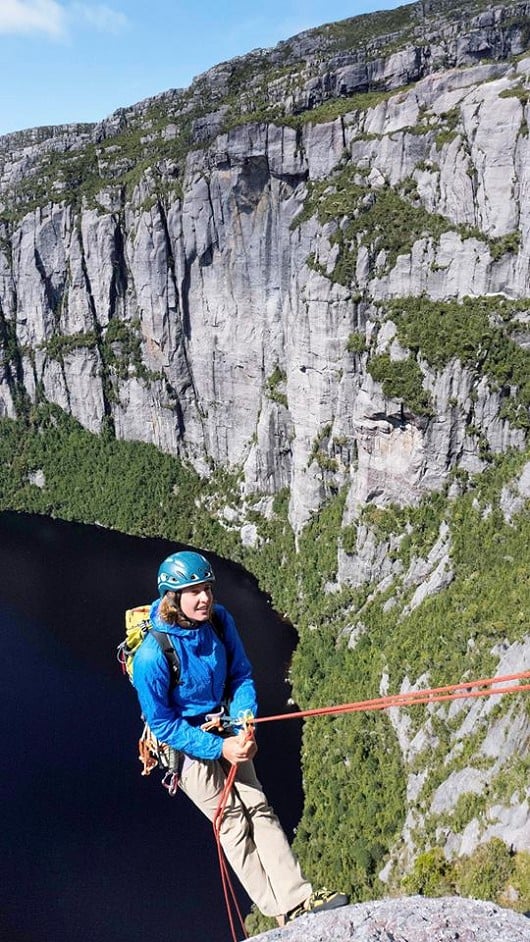
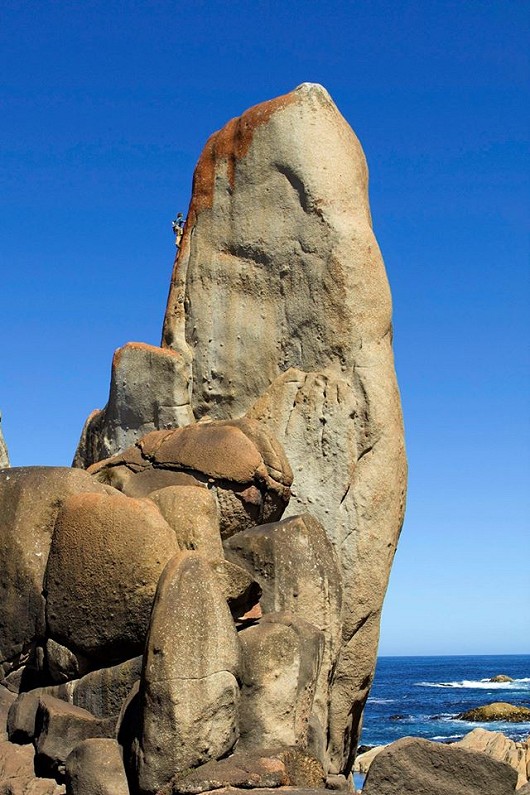





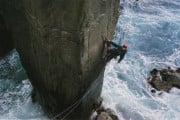

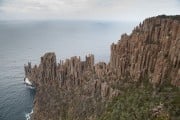
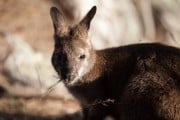




Comments